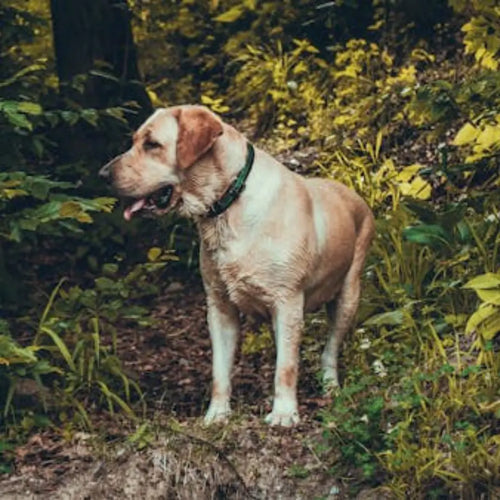Dogs, while often cherished as loyal companions, can also pose a significant risk to human safety. In fact, dogs are the third deadliest creature on Earth, surpassed only by mosquitoes and snakes. This alarming statistic is partly attributed to the sheer number of dogs worldwide, estimated to be between 700 million and 1 billion.
The potential for dog attacks is a serious concern. The American Veterinary Medical Association reports that dogs bite more than 4.5 million people annually in the United States alone. While many of these bites may not require medical attention, over 800,000 people bitten by dogs seek medical care each year.
Understanding the factors that contribute to aggressive behavior in dogs is crucial for pet owners and the general public.
Understanding the Root Cause
While dogs are often seen as our loyal companions, their behavior can sometimes take a troubling turn. The key to preventing aggression lies in understanding the underlying cause.
The American Kennel Club notes that researchers have identified common factors linked to aggressive behavior. Fear stands out as a major culprit. Fearful dogs are up to five times more likely to lash out, highlighting the importance of creating a safe environment for your canine friend.
Painful conditions like hip dysplasia can also contribute to aggression, as discomfort can make a dog feel threatened or vulnerable. Age plays a role as well, with older dogs exhibiting a higher risk. This might be due to pain from undiagnosed conditions or decreased sensory perception leading to startled reactions.
Any pet parent who is concerned that a health condition is causing their pup to behave badly should speak to a professional veterinarian. A diagnosis is the first step to treating or managing the condition. It could get your pup back to normal health and behavior. As well as injuries and illnesses, this solution may overcome dental problems or parasite issues.
The study also revealed some interesting breed-related trends. Male dogs showed a higher propensity for aggression compared to females, although past studies haven't always supported this finding. Additionally, small dogs appeared more aggressive than their larger counterparts.
Environmental factors also have a significant impact. Dogs living in single-dog households or without experienced owners displayed increased aggression. This emphasizes the importance of socialization and providing your dog with opportunities to interact positively with other dogs and humans.
Beyond these common factors, a rare but serious condition called rage syndrome can also manifest as aggression. As described by Texas A&M University, this complex issue presents with sudden, unprovoked outbursts.
The causes of rage syndrome are still being investigated but can involve genetic and neurological factors. Here, vigilance is key. Watch out for unpredictable episodes of aggression without any discernible trigger, confusion during the attack, and glazed eyes.
Consulting a Professional Trainer or Behaviorist
If your dog is exhibiting aggressive behavior, consulting a professional dog trainer or behaviorist is essential. They can create a personalized plan to address your dog's unique needs.
According to Daily Paws, it's essential to prioritize credentials over cost when selecting a trainer. While cost is a factor, investing in a qualified professional will yield better long-term results. Training costs can range from $1,500 to $2,000 in the first year, depending on your location and desired level of training.
Look for trainers with industry-recognized certifications like CPDT-KA (Certified Professional Dog Trainer - Knowledge Assessed) or CDBC (Certified Dog Behavior Consultant). These certifications indicate extensive training and expertise.
Additionally, consider a trainer's experience and commitment to ongoing education. While years of experience are valuable, younger trainers who are certified and dedicated to their profession can also be excellent choices.
Consulting a behaviorist or behavior consultant is advisable if your dog is exhibiting severe behavioral problems like aggression. While trainers excel at teaching cues and tricks, behaviorists specialize in addressing underlying issues that contribute to problematic behaviors.
Early Intervention: A Proactive Approach to Preventing Aggression
Addressing signs of aggression early is crucial in preventing the behavior from escalating into more severe problems. Early intervention allows for timely intervention and can significantly improve the chances of successful behavior modification.
By recognizing and addressing subtle changes in behavior, such as increased growling, snapping, or avoidance, pet owners can proactively address potential issues. Early intervention also provides an opportunity to identify underlying causes such as fear, pain, or anxiety, allowing for targeted interventions.
Addressing aggression early often involves less intensive training and can prevent the development of negative associations. Early intervention also helps to maintain a positive dog-owner relationship, which is essential for successful behavior modification.
Avoiding Punishment-Based Training
Punishment-based training methods, such as yelling, hitting, or using shock collars, can have severe negative consequences for dogs. These methods often increase fear, anxiety, and aggression, rather than promoting desired behaviors.
When dogs are subjected to punishment, they may associate it with the person delivering it, leading to fear-based aggression or avoidance behaviors. Punishment can also damage the dog-owner bond, making it more difficult to establish trust and cooperation.
Instead of relying on punishment, consider using positive reinforcement training. This approach focuses on rewarding good behavior, building trust, and promoting positive associations.
Recognizing Body Language: A Key to Preventing Aggression
Understanding your dog's body language is essential for anticipating and preventing aggressive outbursts. By paying attention to subtle cues, you can identify signs of stress, fear, or frustration before they escalate into aggression.
Common body language indicators of stress or fear include:
- Tucked tail: A tucked tail often indicates fear or submission.
- Avoidance: A dog may try to avoid eye contact or retreat to a safe space.
- Raised hackles: Raised hackles are a common sign of aggression or fear.
- Growling or snarling: These vocalizations are clear warnings that a dog may be feeling threatened or agitated.
Dog Bite Claims: A Growing Concern
Dog bites can have severe consequences, not only for the victims but also for dog owners and their homeowner's insurers. In addition to physical and emotional trauma, dog bite cases can result in substantial financial losses.
Homeowners insurance often covers dog bite incidents, but the payouts can be substantial. According to Forbes, the average payout for a dog bite claim in 2022 was $64,555, a 31.7% increase from the previous year. This significant rise highlights the increasing severity and cost of dog bite incidents.
In 2022, a total of 17,597 dog bite claims were filed, resulting in a combined cost of over $1.1 billion for homeowners insurers. This substantial financial burden underscores the importance of responsible dog ownership and the need for preventive measures to reduce the risk of dog bites.
Loewy Law Firm notes that victims of dog bites should seek legal advice to ensure they receive fair compensation for their injuries and losses. By understanding their legal rights and taking action, victims can get the support needed to recover from dog bite trauma.
Frequently Asked Questions
How do you deal with a dog who is aggressive towards the owner?
To manage a dog's aggression towards its owner, avoid punishment, as confrontational training techniques like verbal scolding and physical corrections can escalate aggression. Instead, consider using an SSRI (Selective Serotonin Reuptake Inhibitor) under veterinary guidance, and avoid known triggers for aggression to help improve behavior.
How do I protect my child from aggressive dogs?
To protect your child from aggressive dogs, teach them to never approach a dog that’s eating or sleeping and always ask permission before petting. Supervise interactions closely, and educate them to recognize warning signs of aggression, such as growling or stiff body language.
How do you prevent aggression in dogs?
To prevent aggression in dogs, ensure proper socialization from a young age. Use positive reinforcement for desired behaviors, avoid punishment-based training, and identify and manage triggers. Regular exercise, mental stimulation, and consistent routines also help in maintaining a balanced and well-behaved dog.
Preventing dog aggression requires a multifaceted approach. Understanding the root causes, providing a supportive environment, and using positive reinforcement training are essential components. Early intervention, professional guidance, and responsible pet ownership are crucial for creating harmonious relationships between humans and dogs.
These strategies can help pet owners prevent aggressive behavior and ensure the safety of both humans and dogs.



